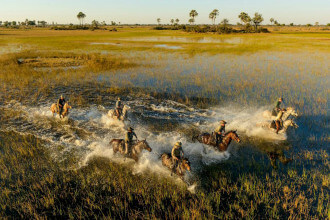Further south, the Nile becomes increasingly picturesque around the cataracts south of Aswan, with vast, smooth 'pink' granite boulders... which really do glow in the setting sun. The river is narrower here, dotted with islands and inlets, and fringed with foliage and palms. Aswan is quiet and peaceful, out of the way of the main tourist route, and feels utterly timeless, connected by a breath of sand to ancient civilisation. This is a lovely place for a few quiet days soaking up the atmosphere.
Aswan is also laden with fantastic things to see and explore at leisure, including the Temple of Isis at Philae, the Aga Khan’s mausoleum and the Monastery of San Simeon, among others. This is a great base from which to explore all these Nubian Monuments, especially since the Sofitel hotel group have so beautifully restored the Old Cataract Hotel to its 1930s-style glory.
Aswan is about 81 km south of Luxor, and has as a much quieter aspect than the northern centres, although it is still a busy market town and very much a thriving centre. Aswan has always been a strategic point of the Nile, from where expeditions were mounted into Nubia to the south, seeking gold, minerals, ivory and precious wood. This northern tip of Nubia is known as 'Lower Nubia’ as the Nile flows into it from further south, in modern day Sudan.
The Nile here is characterised by large granite boulders inscribed with ancient carvings and hieroglyphic graffiti, and flanked on either side by desert rolling to the horizons. With its stunning views and sunsets and relaxed pace, this area became a popular winter resort for Europeans in the early 1900s, and a sense of timelessness permeates.
Aswan: things to do
Just across the waters from the town of Aswan or the Old Cataract Hotel, the well-worn Elephantine Island is fun to explore. Its ancient ruins (from pre-dynastic to Greek and Roman) are fascinating, and often entirely deserted; we recommend exploring with a guide in order to get the most out of the experience.
Beyond the island is Kitchener’s Island, named for the British general Horatio Kitchener, who was sent to reorganise the Egyptian army in 1883. The island is now a botanical garden, planted by Kitchener and still flourishing today.
Looking back over Aswan town to the western horizon, you can see the tomb of Quebbet el Hawwa, a local saint, with tombs of pharonic nobles and dignitaries below.
Not far from Aswan is the sanctuary of Isis at Philae Island in the center of the Nile between the Old Dam and the High Dam, which marks the start of the World Heritage defined Nubian Monuments sites that extend south down to Abu Simbel. Abu Simbel can be visited as a day trip from here, by road or air.
Aswan: the Temples at Abu Simbel
The Abu Simbel temples are two massive rock temples situated on the western bank of Lake Nasser, about 300km south of Aswan by road. These twin temples were carved from the mountainside in the 13
th century BC during the reign of Ramesses II, as a monument to himself and his queen Nefertari and to assert the Egyptian Empire’s hold over Nubia. The temples were originally built on the site of sacred grottos, and Ramesses sought to show himself as a force to be reckoned with, as a man defeating his enemies, and as a god.
The scale of the sculptural forms of the Great Temple are incredibly impressive, with four versions of Ramesses wearing the double crown of Upper and Lower Egypt. Between his legs are the princes, princesses and Queen Nefartari, all considerably smaller than him in size. The temple was aligned such that twice a year the rays of the sun illuminate the innermost sanctuary, and statues of Ptah, Amun-Re, Ramesses and Re-Horakhty. Little Temple stands near by, dedicated to the king’s wife Nefertari, with six façade statues showing the Pharoh and his wife as gods.
The entire complex had to be reconstructed on a hill above the Aswan Dam in 1968 to prevent it from being flooded. This was a huge undertaking in archaeology and engineering terms, but the results are fantastically impressive.
For a summay of the
Best places to stay in Aswan, please follow this link.
 2023 Guest Reviews
2023 Guest Reviews
 Kruger Walking Safari
Kruger Walking Safari
 Botswana Trip Report
Botswana Trip Report
















